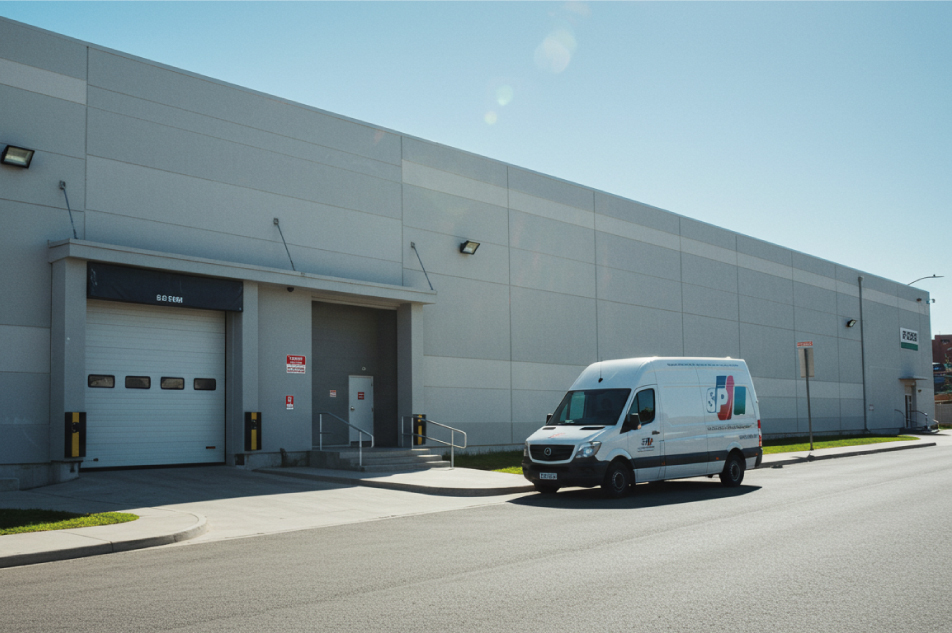Warehouse Layout Design: A Comprehensive Guide

A well-planned warehouse layout ensures that goods are organized, stored properly, and can be retrieved quickly when needed. Conversely, a poor layout design can lead to bottlenecks, wasted space, and increased operational costs. An optimized warehouse layout improves the overall efficiency of operations.
What Is a Warehouse Layout?
A warehouse layout refers to the systematic arrangement of different areas to ensure a streamlined working process concerning the storage, retrieval, and handling of goods. It defines how materials, inventory, and workers move through the facility.
An optimized layout considers space utilization, workflow efficiency, inventory management, and safety. The key areas in a warehouse layout include:
- Receiving Area: The section where incoming goods are unloaded and checked.
- Storage Area: The space for storing inventory until it is needed for order fulfillment.
- Packing Area: The section where goods are packaged before shipment.
- Shipping Area: The area where orders are prepared for dispatch.
- Service Areas: Includes employee restrooms, offices, and break rooms.
A well-designed warehouse layout ensures a seamless workflow from receiving to shipping, with minimal congestion or unnecessary movement. It should also be flexible enough to accommodate future business growth.
Why Is Warehouse Layout Important?
Maximizes Space Efficiency
A good warehouse layout ensures that every square foot of space is used effectively. This involves using adjustable racking systems, stacking goods vertically, and incorporating high-density storage solutions. Efficient space management also reduces the need for wide aisles, freeing up more storage space.
Improves Workflow and Order Fulfillment
An efficient layout ensures smooth traffic flow, reducing the time spent navigating the facility. This boosts order fulfillment speed by enabling quick and easy retrieval of items. Minimizing unnecessary movement improves productivity and reduces labor costs.
Enhances Safety and Reduces Risks
A carefully planned layout incorporates safety measures, ensuring wide aisles for equipment maneuverability. Hazardous areas with heavy machinery or chemicals are separated from pedestrian paths. This reduces the likelihood of accidents.
Supports Automation and Technology Integration
Warehouse management systems (WMS) and automated storage and retrieval systems (AS/RS) rely on a structured layout to function optimally. Automated technologies such as autonomous mobile robots (AMRs) and conveyor systems can be easily integrated into a properly designed warehouse.
Types of Warehouse Layout Designs
There are several warehouse layout types, each suited to different operational needs:
1. U-Shaped Layout
In this design, the receiving and shipping areas are adjacent, with storage in the back. This layout is ideal for smaller facilities with limited space, as it allows for efficient traffic flow. However, sufficient space between shipping and receiving bays is necessary to avoid congestion.
2. I-Shaped Layout
This layout places the receiving and shipping areas at opposite ends, with storage in the middle. It is ideal for high-volume warehouses that require fast, single-path product movement, reducing handling times.
3. L-Shaped Layout
Here, the receiving and shipping areas are located at opposite ends. This layout supports smooth cross-docking operations, making it perfect for warehouses that quickly process incoming goods for immediate shipping.
Planning the Perfect Warehouse Layout
1. Define the Operation's Purpose
First, determine the primary function of your warehouse. Are you handling bulk goods, perishable items, or small, high-turnover products? Understanding the purpose helps you choose the right layout and storage methods.
2. Space Calculation and Diagramming
Accurately measure the warehouse space and create a detailed layout using grid paper or digital tools. Calculate the cubic volume to determine the storage capacity, accounting for offices, restrooms, and equipment areas.
3. Consider Storage Requirements
Determine what types of products you will store and their storage needs (e.g., pallets, bins, shelves). Plan for enough storage capacity to avoid overcrowding and maximize density.
4. Evaluate Material Handling Equipment
Assess the equipment required for operations, such as pallet jacks, forklifts, or AS/RS systems. The layout should accommodate equipment movement without sacrificing storage space.
5. Optimize Space Usage
Use adjustable shelving systems and vertical storage to maximize space. Design efficient traffic flow paths and ensure easy access to packing and shipping areas.
6. Test Traffic Flow
Before finalizing the layout, test it with a mockup using masking tape or temporary markers. Walk through the space and identify any congestion points, making necessary adjustments.
7. Implementation and Employee Training
After approving the layout, install shelves, racking systems, and equipment. Train employees on safety procedures and inventory management to ensure smooth operations.
Warehouse Layout Challenges
Space Optimization
Balancing storage capacity with accessibility can be challenging. Inefficient aisle planning or insufficient space for equipment can reduce productivity.
Structural Limitations
Existing warehouses may have low ceilings or narrow aisles, making it difficult to accommodate large equipment or high-density storage systems.
Automation Integration
Incorporating automated systems like AS/RS or AMRs requires precise layout planning to ensure adequate space for conveyors, robots, and picking stations.
Safety Compliance
Meeting safety regulations is critical. This includes clear pedestrian paths, proper signage, and compliance with health and safety standards to prevent accidents.
If you're considering a new warehouse layout and need expert guidance, Contact us now . Our team is ready to help you implement the most efficient warehouse solution tailored to your needs.
Do you need more information?
Our team of experts will be happy to help you with any questions you may have.
More information